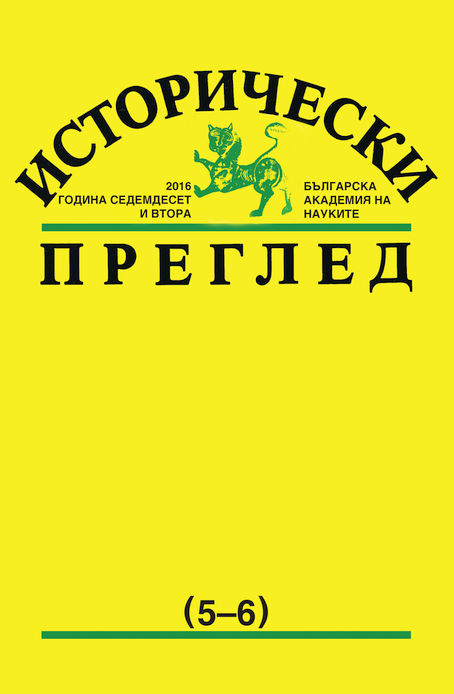Историята на „плана Валев“ или още по въпроса за румънско-съветските отношения през първата половина на 60-те години на ХХ век
The History of the „Valev Plan“ or the question of the Romanian-Soviet relations in the first half of the 1960s
Author(s): Iliyana MarchevaSubject(s): History, Diplomatic history, Economic history, Political history, Recent History (1900 till today), Special Historiographies:, Post-War period (1950 - 1989), Cold-War History
Published by: Институт за исторически изследвания - Българска академия на науките
Keywords: "the Valev plan"; socialism; Soviet-Romanian relations; socialist economy;
Summary/Abstract: The study examines the scandal with Emil Valev’s article “Problems of the economic development of the Danubian areas of Romania, Bulgaria and the USSR” which gives one of the reasons for the deterioration of the Romanian-Soviet relations in the 1960s and justifies the special position of Romania in the Eastern bloc, typical of the end of the Cold War. The author uses the personal archive of Professor Valev. After loosening Stalin’s grip and declaring new relations between the USSR and Eastern Block members, Khrushchev hoped to strengthen unity by using the integration mechanisms in the Council for Economic Mutual Assistance. But the proposed new principle of economic relations – the creation of supranational production and territorial complexes – turned out to be a barrier to this policy. Emil Valev – a Soviet geographer, a Bulgarian of origin – justifies in his article exactly such a supranational economic complex in the border regions of Bulgaria, Romania and the USSR in the lower Danube. The negative reaction of the Romanian leadership turned the article into the “Valev plan”, aimed at breaking the territorial integrity of Romania and dooming it to develop as an agrarian country – according to the Romanian interpretation of the article. It was made in the spirit of the Declaration of the Central Committee of the Romanian Workers’ Party of April 1964 on the “Romania’s independence” from the USSR. It provided the Romanian leadership with the opportunity to play triple game – to stay in the Eastern Bloc structures but to pursue its industrial policy; to strengthen and nurture the Russophobic attitudes in the Romanian society, and hence its positions within it; to send signals to the West and China about their independence from the USSR. The dissatisfaction of the Romanian country led the Soviet leadership to scrutinize the author of the article and to transfer to him and the MGU the responsibility for his interpretation of the difficult to follow integration principle. However, after the conflicts with Romania under the new Romanian leader, the USSR has been forced to tacitly give up further deepening of socialist economic integration among the member countries of the CMEA. Thus, it was deprived of an important mechanism to strengthen the Eastern Bloc. The rational economic arguments of the idea of the supranational complex use of Danube resources as an element of integration, however, have not died. They, albeit in a much different form, have been re-animated by the European Union in the form of a Danube strategy only at the beginning of the 21st century – 2009–2010.
Journal: Исторически преглед
- Issue Year: 2016
- Issue No: 5-6
- Page Range: 87-110
- Page Count: 24
- Language: Bulgarian
- Content File-PDF

